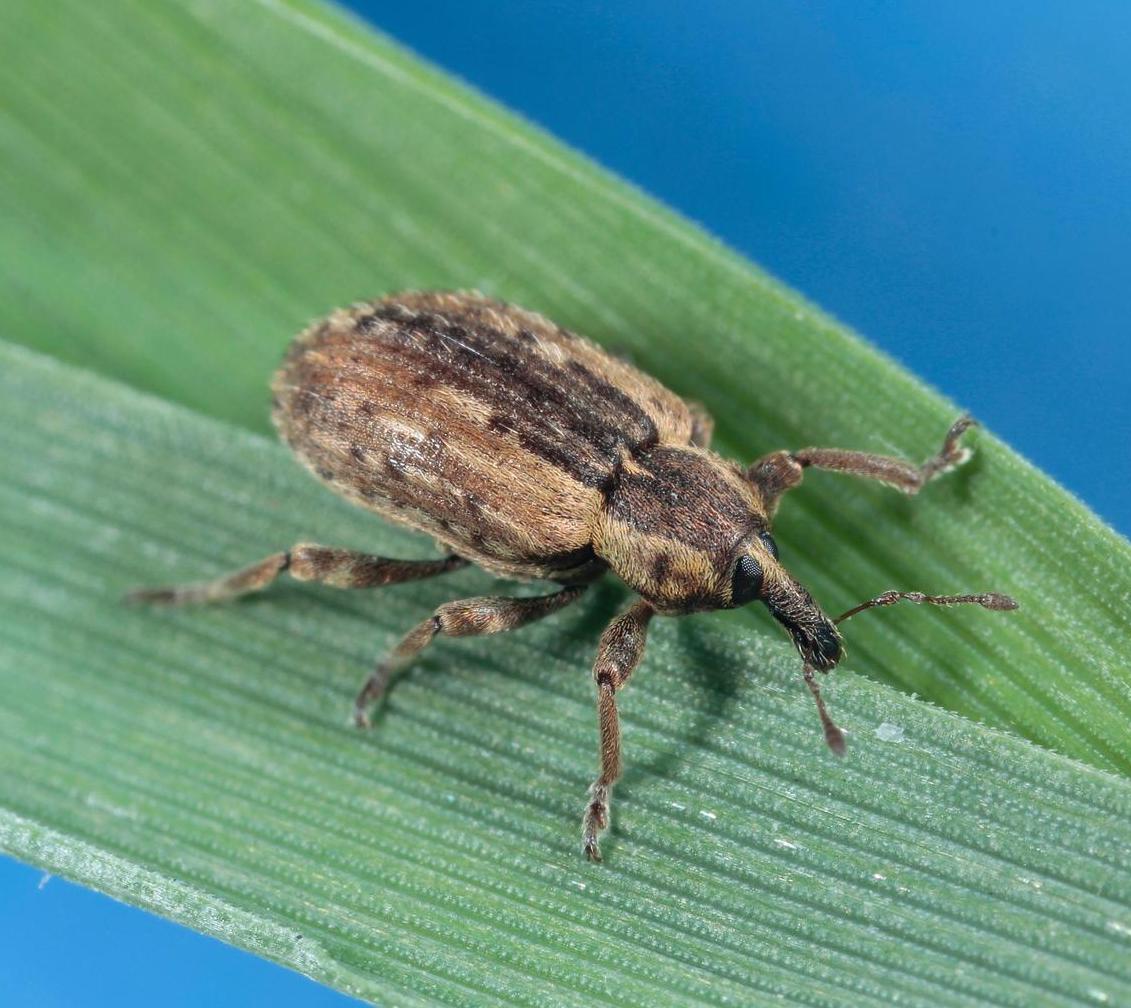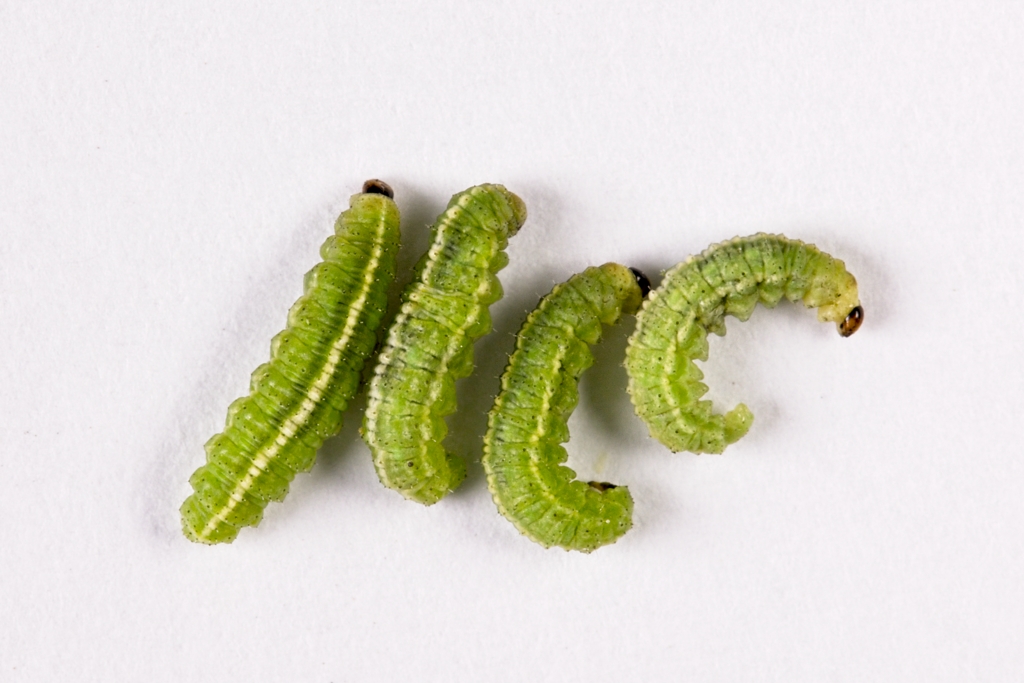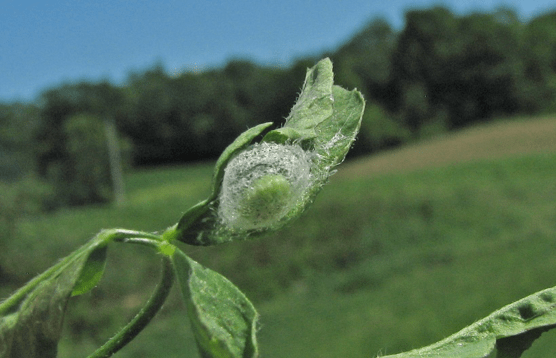Alfalfa Weevil
Hypera postica
|
Alfalfa weevil adult. (Joseph Berger) |
Alfalfa weevil larva. (Pat Porter) |
|
Alfalfa weevil larval defoliation. |
|
Identification
Adult alfalfa weevils are 3/16-inch long and light brown with a dark mid-dorsal line extending down the middle of the back. Adults possess a distinctive snout and readily fall to the ground when disturbed. Eggs are laid inside alfalfa stems in fall or spring. Small, light green, black-headed, legless larvae have a distinct white stripe down the center of the back. Larvae feed on the upper leaves and growing terminals of the plant early in the spring, reaching a quarter-inch in length when full grown. Larvae spin loosely-woven, silken cocoons, generally found on the ground among the leaf litter. Most damage occurs before the first cutting, but damage by larvae and adults can suppress yields by delaying regrowth.
Fall or winter grazing of alfalfa, or crushing the stems with a heavy roller, can destroy overwintering eggs and reduce spring larval populations, but the level of suppression provided by dormant-season habitat manipulations is not reliable. Parasitic wasps and fungal pathogens also may help limit damage, but do not usually provide sufficient levels of control in Kansas. Weevil-resistant alfalfa varieties are being developed, but insecticide sprays and timely cutting remain the most practical means of preventing economic damage.
Treatment and Decision-Making
Treatment decisions should be based on the stem-count method.
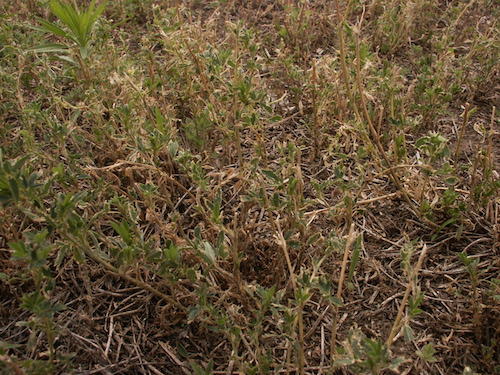 Regrowth damaged by adult weevils. Regrowth damaged by adult weevils. |
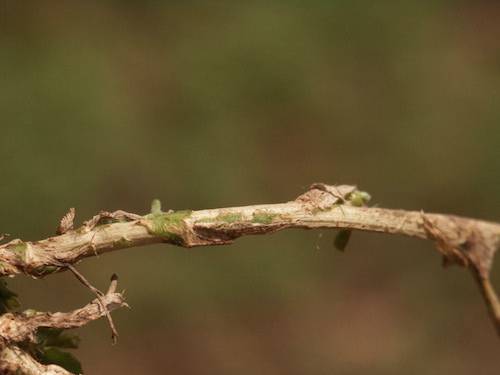 Close-up of adult weevil 'debarking' damage. Close-up of adult weevil 'debarking' damage. |
Spray gallonage for ground equipment: 10 to 12 gallons per acre for 7-inch alfalfa; 15 to 20 gallons for 8- to 15-inch alfalfa; at least 20 gallons per acre on alfalfa more than 15 inches tall. Use 30 psi and hollow cone nozzles, and adjust spray pattern as suggested by the nozzle manufacturer to overlap near the top of the canopy.
Spray gallonage for aerial equipment: The use of less than 2 gallons of spray per acre can result in less than satisfactory control. Overall efficacy increases as more carrier is used.
Please refer to the most recent version of the Alfalfa Insect Management Guide for control options. More information can be found in KSRE publication MF2999: Alfalfa Weevil.
Page last updated 03/21/2024 by J.P. Michaud.
